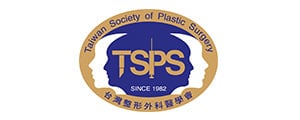Objectives: Many technical advances have been made to conventional liposuction since its conception in the 80’s as a tool to destroy and withdraw body fat deposits. Most new technologies offer lipolisis with less physical stress on the surgeon. We developed a new mechanism to treat adipose tissue (AT), applying a photochemical property of the light, Selective Tissue Engineering Photostimulation (STEP™) which dissolves the collagen fibers of the connective tissue, allowing the adipocytes and stem cells to be aspirated without trauma. Less morbidity, good skin retraction.
Introduction: . Since Adipose-Derived Mesenchymal Stem Cells (MSCs) have been identified as an ideal source of cells for regenerative medicine with the potential to differentiate into a variety of cell lineages for tissue engineering, an ideal technique should be pursued by plastic surgeons. We initiated our research in search of a gold standard in liposuction that could offer an ideal harvesting of MSCs with preservation of adipocytes and less trauma for the patient.
Materials / method: We compared the Suction-assisted lipectomy (SAL) with our proposed technique, in adipocytes viability and apoptosis, mesenchymal stem cells quantity & quality,
the use of pain killers in the post op. The recovery period between both techniques.
Skin retraction is showed after STEP technique.
Results: The One S.T.E.P. Liposculpture™ , as described, our lab analysis shows that the aspirated subcutaneous tissue obtained after using the novel laser evidenced Selective Tissue Engineering Photostimulation (S.T.E.P.) on Adipocytes, MSCs and connective tissue.
Conclusion: The STEP™ technique offer a high performance therapy, is used for liposuction, for liposculpture, for regenerative purpose, for volumetric treatment, for reconstruction, because offer an important material/tissue for all this purposes, not only for aesthetic.
Divulgação de informações
Você recebeu algum patrocínio para sua pesquisa neste tema?
Não
Você recebeu algum tipo de honorário, pagamento ou outra forma de compensação por seu trabalho neste estudo?
Não
Você possui relação financeira com alguma entidade que possa competir com os medicamentos, materiais ou instrumentos abordados no seu estudo?
Não
Você detém ou pediu a registro de patente para algum dos instrumentos, medicamentos ou materiais abordados no seu estudo?
Não
Este trabalho não recebeu nenhum patrocínio direto ou indireto. O mesmo está sob a própria responsabilidade do seu autor.













